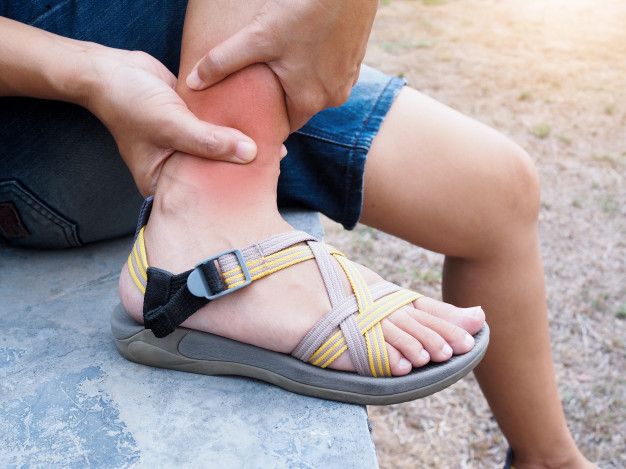Osteoarthritis is one of the common types of arthritis that may occur when bone tissue starts wearing down. It affects many people in Perth. Common risk factors of osteoarthritis are agr & obesity. This kind of arthritis is treated by the low level laser therapy. In this blog, we are going to explain symptoms, risk factors & treatment procedures of Low level laser therapy.

Symptoms Of Osteoarthritis
The symptoms of osteoarthritis generally develop slowly. According to the professional podiatrists, major signs and symptoms of osteoarthritis are:
Pain: Pain is the most common symptom of osteoarthritis. Osteoarthritic joints may hurt after or during movement.
Stiffness: Joint stiffness is another common symptom of osteoarthritis. It might be very noticeable after being inactive or upon awakening.
Tenderness: Tenderness is one of the major symptoms of osteoarthritis. Your joint may feel tender after applying a little pressure.
Lack of flexibility: Lack of flexibility is one of the major signs of this painful condition. You can not move your joint through the proper range of motion.
Grating sensation: While using the joint, you may feel a grating sensation. You may hear a crackling or popping sound.
Bone spurs: Bone spur is one of the major symptoms of osteoarthritis. This is an extra part of bone that affects joints.
Swelling: Last but not the least, swelling is one of the common symptoms of osteoarthritis. This is generally caused by the soft tissue inflammation.
Risk factors
There are several factors found by the experts that can increase the risk of this condition. Some of them are:
Age: Age is one of the major risk factors of osteomyelitis. The risk of this condition maximizes with age.
Obesity: Obesity is another cause of Osteoarthritis. Carrying excessive body weight may contribute to this osteoarthritis in many ways.
How To Treat Osteoarthritis?
There are several ways to treat Osteoarthritis. According to the medical studies and researches, this condition can be treated by low level laser therapy in Perth. This is also known as cold laser therapy. Other heel & foot pain conditions treated by this therapy include:
• Joint conditions like synovitis
• Tendinopathy or tendinitis
• Soft tissue injuries such as ankle sprains & muscle strains.
Low level laser therapy is a painless, non-invasive & safe process. Many reputable podiatry clinics in Perth provide this treatment at a reasonable price. This therapy mainly works minimising oxidative stress & encouraging the ATP production. It also promotes cell metabolism by preventing the inflammation.
Osteoarthritis is a common type of arthritis that can be treated by the low level laser therapy. This painless therapy gives certain relief from this condition.


 Heel pain is a common type of foot problem that is faced by many people in Perth. The pain can either be severe or mild. It occurs just behind or under the heel. Heel pain can be caused by many reasons. The pain mainly starts gradually. Chronic heel pain or foot pain is mainly triggered by wearing a tight or flat shoe. To reduce this pain, consulting with a good podiatrist is necessary. In this blog, we will discuss the main causes and treatment procedure of foot pain.
Heel pain is a common type of foot problem that is faced by many people in Perth. The pain can either be severe or mild. It occurs just behind or under the heel. Heel pain can be caused by many reasons. The pain mainly starts gradually. Chronic heel pain or foot pain is mainly triggered by wearing a tight or flat shoe. To reduce this pain, consulting with a good podiatrist is necessary. In this blog, we will discuss the main causes and treatment procedure of foot pain.


